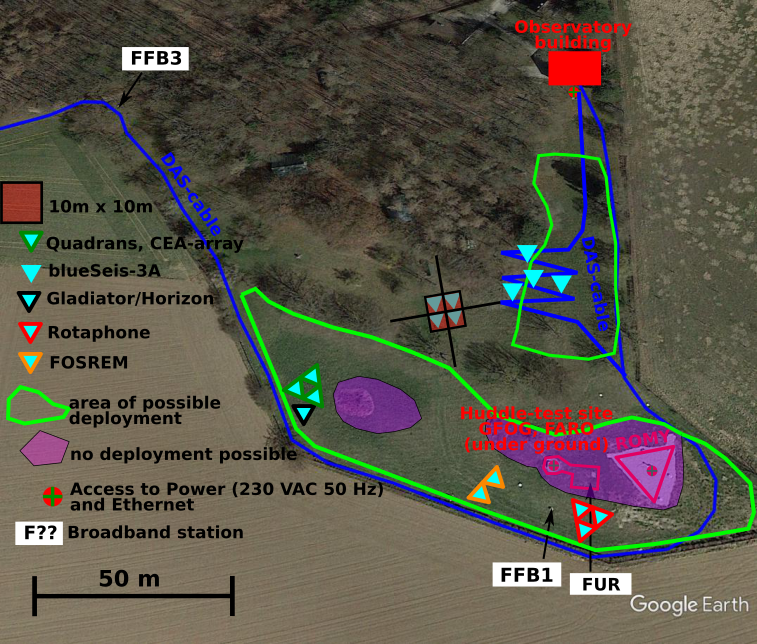NOV19 Experiment
The November 2019 Experiment
Felix Bernauer organized a world-wide unique experiment to be staged at the Geophysical Observatory in Fürstenfeldbruck, Germany.
For the first time, dozens (>40) of portable rotation sensors, comprising blueSeis-3A, rotaphone, fibre-optic gyros from Polish scientists and Steckeisen, mems-based sensors, as well as classic geophones, broadband seismometers and an additional DAS (Distributed Acoustic Sensing) cable for strain measurements were deployed together.
A seismic truck vibrator and small explosions served as seismic sources to generate waves.
Previous to the actual experiment, so-called huddle tests were carried out to investigate the instrumental noise across the different sensors.

Site map of the NOV19 Experiment.
The goal is to understand the benefit of additional gradient based measurements (rotation, strain) for near surface exploration.
A tremendous amount of data was collected during the experiment and is now being analyzed. First results are expected to be reported at the EGU2020 Meeting in Vienna.
The following video contains information on the experiment, and various interviews with the involved scientists:
.png)